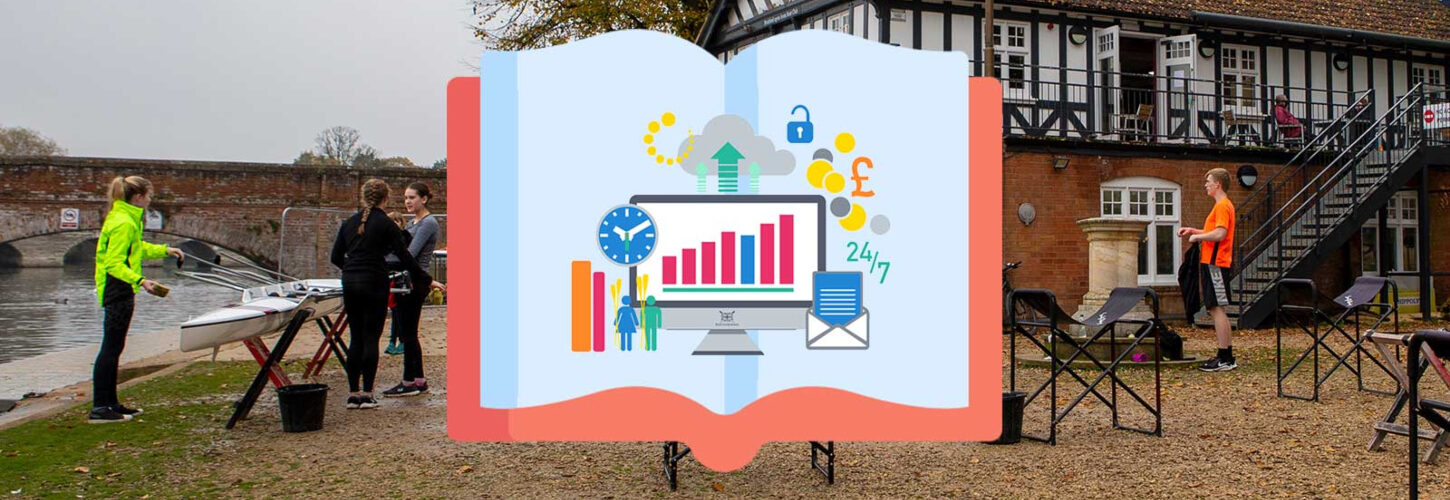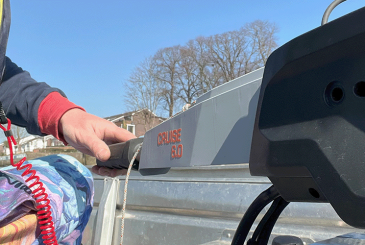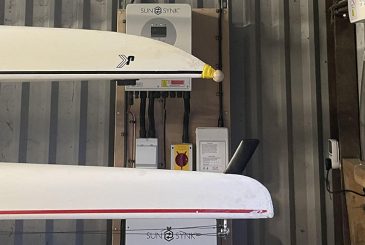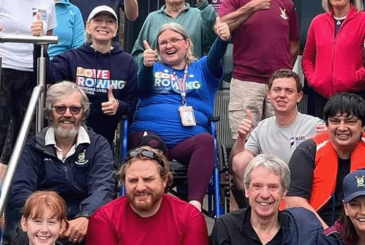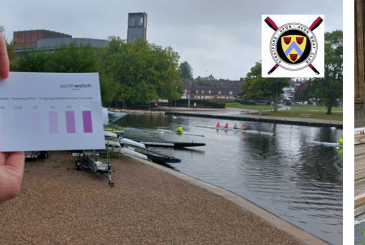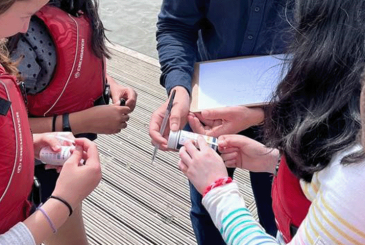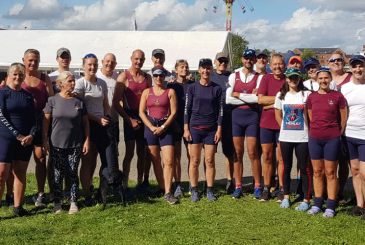Have you checked out the series of British Rowing Club Guides, all designed to support your club and committee? Zoe Gullen delves into the Time for Tokyo and Club Adaptive Guides highlighting ways that both can help you
The Time for Tokyo Guide
Released earlier in the summer, Time for Tokyo is part of a library of new club guides, all jam-packed with information, available to download from the British Rowing website. It remains an invaluable resource for clubs seeking to maximise the Tokyo effect and welcome as many people as possible to the sport.
The guide is full of ideas for promoting rowing and engaging with the community, from taster days and learn to row courses to social events and Go Row Indoor accreditation. These initiatives tap into the increasing emphasis on health and wellbeing, and the significant benefits of being outdoors, that have come to the fore during the pandemic, and present opportunities for clubs to develop new revenue streams that may be critical to post-Covid recovery. There are also suggestions for working in partnership with other groups and local authorities to help secure funding.
As a person’s first contact with a club is very often online, Time for Tokyo offers pointers to help ensure your websites and social media channels are up to date, have clear, easily accessible information and are representative of the club, the sport and the community.
“ClubHub administrators can join a user forum to share tips and insights and learn from each other’s experiences”
Any expansion of a club’s membership base and activities inevitably increases the administration load, and the guide highlights tools available from British Rowing to help with this. ClubHub, which is free for affiliated clubs to use, is a central component, putting club management, the financial process and communications all in one GDPR-compliant place. There is also functionality for event management, such as bookings for learn to row courses, or selling tickets for social events.
ClubHub administrators can join a user forum to share tips and insights and learn from each other’s experiences. Similarly, there is a dedicated British Rowing Facebook group for volunteers, which aims to create a network across clubs throughout the country, pooling knowledge, tips and club experiences to help support and expand the volunteer community.
The Tokyo effect extends across the entire sport, with new members welcome at all levels and abilities, from indoor and recreational to those with the potential to compete at the highest level. Time for Tokyo includes a page on British Rowing talent identification programmes for the Olympic and Paralympic squads, with links to promotional videos, to encourage clubs to get the word out, making new people drawn to the sport aware of the established performance pathways, and helping to find the international athletes of the future.
Great Britain’s outstanding performance at the Tokyo Paralympics, which included three finals and two gold medals in rowing, put disability sport centre stage.
Rachael Lunney, the adaptive coordinator at City of Oxford RC, says that they have had a few enquiries and new starters. She adds that starting adaptive rowing “is well worth it – the joy you get out of doing it, and it’s rewarding. We started as the first adaptive club in 1998. It’s great, as there are more adaptive squads to race against.”
The Club Adaptive Guide
The Club Adaptive Guide is available for clubs either introducing or developing adaptive rowing – which encompasses all rowing for people with disabilities, not just those covered by Paralympic classifications, and is one of the key growth areas of the sport.
Bruce Lynn, who coaches the hugely successful Para/Adaptive squad at Marlow, encourages clubs to get involved: “It’s much easier to support adaptive rowing that you think. I don’t want to say there’s no complexity and no risk, because there is, but no more than with any other vulnerable rowing population.”
“You don’t have to lay out the red carpet and have perfect accessibility”
The guide is regularly updated in line with best practice and British Rowing’s commitment to diverse, inclusive sport, so clubs are supported in delivering adaptive rowing safely and within their capabilities to make the sport accessible to everyone.
It prompts clubs to consider what they can offer, and how to go about promoting adaptive rowing. This can be simple, with organic growth stemming from a confidence and capacity to welcome disabled members to a club or, at the other end of the spectrum, by forging links and partnerships with local disability groups.
There is a list of questions for clubs to review, to ensure all important points are considered and addressed, such as the availability of appropriate equipment, working out the practicalities of coaching, and ensuring all necessary safety measures are in place. However, Bruce says, “You don’t have to lay out the red carpet and have perfect accessibility. Don’t not do it because you don’t feel you are accessible enough.”
Rather, he says the key is to be willing to experiment, to be entirely athlete-led, working with individual rowers and their impairments: “If you have a good handle on rowing and are sensitive and open-minded, you will figure it out. There is no recipe to make it work, it’s not paint by numbers. Sometimes it’s about adapting technique, sometimes adapting equipment.”
“At Marlow, Bruce has been working on double sculling as a pair with one sculling blade each side”
The guide also includes information on external organisations, such as Mencap and International Mixed Ability Sport, for any extra guidance and training.
There is a case study of Bradford Amateur Rowing Club’s mixed ability group, which was established in 2017 to increase inclusivity and integration within the club. Group members are not just rowers with physical disabilities, but there are also those with other barriers to participation such as learning difficulties or poor mental health, setting out the breadth of opportunity and capacity for innovation within adaptive rowing.
There are new innovative ways of competition and activity being tried in many clubs such as the ‘supported rowing’ competition format in which an adaptive rower is paired with an able-bodied partner. At Marlow, the clubs have been working on double sculling as a pair with one sculling blade each side, whilst coxless pairing at Stratford with an adaptive rower and an able-bodied partner also works well. These innovations help break down the pre-conceived notions of how to row to the first principles of ‘what makes a boat move?’
In terms of accessibility, the guide covers not just facilities, but also topics such as language and online presence. This includes the use of inclusive and appropriate language and clear content, both in terms of what is said, and also, website layout and fonts. Similarly, images used on websites and social media should be inclusive and representative, of both the membership and what the club can offer, and not reinforce stereotypes.
“The Guide emphasises that adaptive rowing is all about attitude, and that with the right mindset, and the infrastructure, clubs and rowers can succeed”
The Club Adaptive Guide sets out the broad landscape of adaptive rowing, and is supplemented by Simon Goodey’s encyclopaedic Supporting Guide, written in consultation with a host of experts, from boat manufacturers and FISA officials to adaptive rowers, coaches and medical doctors.
It addresses all aspects of adaptive rowing from coaching considerations for different impairments and adaptive-specific rigging, to common injuries and their treatment. There is also a history of adaptive rowing, a very helpful glossary, and features such as a SignAlong vocabulary for rowers with impaired communication skills.
Above all, though, both guides emphasise that adaptive rowing is all about attitude, and that with the right mindset, and infrastructure, clubs and rowers can only succeed. This is echoed below by Rebecca Hewitt of Pengwern Boat Club, the subject of a case study in the Club Adaptive Guide:
“To be this close to nature is thrilling and something I have longed for during the 20 years I’ve been in a wheelchair. To be able to do so using only muscle power and the cooperation of the boat is exhilarating… There is so much about rowing I enjoy.
“Being pushed away from the pontoon always gives me a thrill of anticipation. The sense that my body is working hard to create the momentum to move over the water. And yet there is a deeper reward than just physical activity, such as independence and an emotional outlet.
“None of this would be possible without the willingness, cooperation, imagination and open mindedness of the volunteers who work behind the scenes and turn up every week in all weathers.”
Read the Club Guides here
You can download the Club Guides for free here.


